B0041VYHGW EBOK (87 page)
Authors: David Bordwell,Kristin Thompson

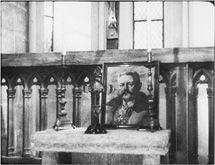
5.174 … tilts down to a military portrait on an altar, underlining the irony of a chapel commandeered as a bivouac.
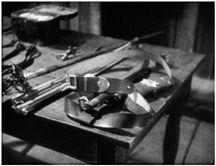
5.175 The camera tracks past whips, spurs, and swords …
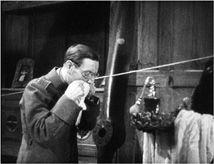
5.176 … to a servant preparing Rauffenstein’s gloves.
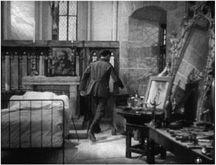
5.177 He then walks away from the camera to close a window before returning …
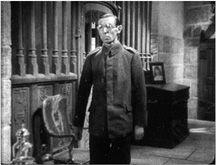
5.178 … into the foreground as the camera pans left and tracks back to reveal …
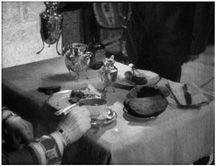
5.179 … a breakfast table …
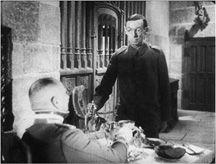
5.180 … at which Rauffenstein is revealed to be sitting.
Late in the film, however, a parallel shot criticizes this one
(
5.181
–
5.183
).
Elsa’s war has none of Rauffenstein’s glory, and that is conveyed chiefly through a parallel created by the repeated camera movement. Moreover, these camera movements work together with mise-en-scene, as the narrative parallel is reinforced by the subtle use of objects as motifs—the crucifixes in
5.173
and
5.183
, the photographs in
5.174
and
5.181
, and the tables that end both shots. (Note the subtle use of the empty chairs upended on the table to reinforce the absence of Elsa’s husband.)
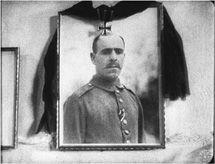
5.181 This shot also begins on an object, a photograph of Elsa’s dead husband …
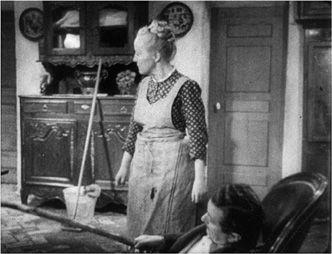
5.182 … before tracking left past Elsa, who remarks, “Now the table is too large”…
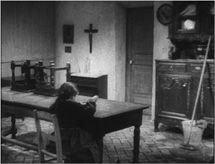
5.183 … to reveal the kitchen table, where her daughter Lotte sits alone.
Moving the camera independently of figure movement also links characters with one another. Again and again in the POW camp, the camera moves to join one man to his comrades, spatially indicating their shared condition. When the prisoners ransack the collection of women’s clothes, one man decides to dress up in them. When he appears, a stillness falls over the men. Renoir tracks silently over the prisoners’ faces, each one registering a reticent longing.
A more elaborate linking movement occurs in the scene of the prison vaudeville show, when the men learn that the French have recaptured a city. Renoir presents the shot as a celebration of spatial unity, with the camera moving among the men as they begin defiantly to sing the “Marseillaise”
(
5.184
–
5.190
).
This complex camera movement circulates freely among the prisoners, suggesting their patriotic courage and unity in disobeying their captors.
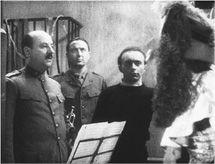
5.184 As the lead “female” singer whips off his wig and requests the “Marseillaise” from the musicians …
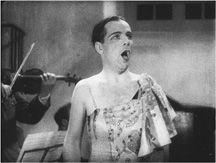
5.185 … the camera moves right as the singer turns toward the audience …
